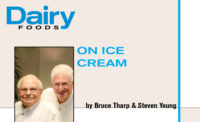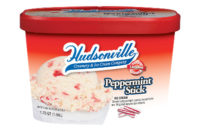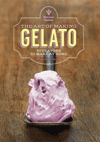The perception of any given added ice cream flavoring is influenced, for good or bad, by appearance, aroma, acidity, taste (sweet, salty, bitter, sour), texture (smooth, creamy, rich) and temperature, including appropriate temperature-related chemistries of any given flavor. A focus on the cost management of flavors and flavorings, therefore, also requires a focus on elements influencing body (chew, bite), texture (smoothness, creaminess), sweetness (amount, quality and compatibility) and other factors, vis-à-vis any given flavor, across the full intended shelf life of the ice cream.
This might seem to be a daunting task, but we can offer some guidance when considering flavoring in a cost-competitive marketplace — that is, how to inoculate any given brand equity against the rigors of widely varying ingredient prices and varying quality of any given flavor.
Brand equity: This refers to features (characteristics) and related consumer benefits (reasons to buy), including characterizing flavor, “naturalness,” fat content, specific sensory appeal throughout the full intended shelf life of the product, etc. The more reasons to buy, the more defensible and sustainable the brand equity.
If a product has a feature that does not reflect a reason to buy, that feature ceases to be a critical point of difference. Such features can be reformulated with little influence on buying intent. Likewise, critical features that must be retained to maintain any brand equity must be identified.
Non-bulky flavors: Reconsider the amount and/or type of characterizing non-bulky flavor used. For characterizing flavors, using less may be advisable. In some instances, simply redeploying (or reducing overall use of) the flavor in question from use in non-characterizing executions and omitting the specific flavor or finding suitable but lower-cost replacement(s) might be possible.
Bulky flavors: These include cocoa powder for chocolate ice cream and inclusions (particulates and syrups). When brand equity requires additional base mixes to tolerate the amount and type of bulky flavors, it might be possible within any given context to reconsider the use of simple white and chocolate mixes but at varying overruns. In some instances, reducing the total number of mixes per product line is an operational savings of significant magnitude.
Line cost averaging: This refers to managing the average selling price of a line of ice creams by setting cost and volume expectations for each flavor to be sold so as to tolerate any given changes to product line sales. That is, “losers” are out; “winners” are retained or added. The management of what, when, where and at what cost specific flavored ice creams are sold can offer significantly enhanced financial returns.
Product compositions versus quality of flavor delivery: In some instances, a given flavor might not inherently deliver a quality rendition of itself in a given base mix. It’s perfectly fine to reconsider the flavor in another context, line or base mix.
Mix composition and mix density: Mother Nature teaches how to manage the final weight per gallon of finished ice cream by managing mix densities and overrun. Fat is less dense than water, which, in turn, is less dense than non-fat solids.
Assuming nothing is more valuable than finished products, the heavier the base mix and the more constant the finished pounds per gallon, the more finished product is made at typically relatively insignificant increases in overrun (~5%). Thus, by managing mix density, even when considering changes in specific lower-cost ingredients, additional finished product can be made.
Cost per unit of sweetness (CUS): We continue to recommend CUS when formulating toward a range of specific objectives well beyond simple sweetness. The use of a variety of individual sweeteners, or combinations thereof, could offer novel opportunities when formulating with mix cost in mind. This concept might also include the application of various high-intensity sweeteners, which in some cases have attractive CUS even compared to sucrose. It is also possible to achieve improvements in heat-shock stability through changes in freezing point.
Package size reduction and increased serving sizes: With all of the activity related to the reduction of ice cream packaging sizes, you also must consider the impending increase in serving size from 1/2 cup (4 fluid ounces) to 2/3 cup (5.4 fluid ounces). That means what might now be four 4-fluid-ounce servings per pint now will be about three (actually, 2.6) servings per reduced-size (14-fluid-ounce) pack. We suspect smaller single-serve units (of varying volumes) will become popular.
Certainly, there will be a lot of reformulation considerations to accommodate any new serving size and any related product declarations with regard to nutrition components that might need to be carried forward (e.g., “low fat,” < 3.0 grams total fat per serving). This would also include the declaration of “added sugars,” which for “no sugars added” must be < 0.5 grams total per serving. Likewise, the flavoring of a serving might/might not allow for aggressive reformulation of flavor formulas (base mix plus added non-bulky and/or bulky flavors.)
All of this is certainly daunting amongst a host of moving cost targets. Eventually, it might be possible to inoculate any given product line from a wide variety of influences on cost for the good for all … including the products!
Need more guidance related to cost saving? Save the dates: Join Drs. Tharp and Young at “Tharp & Young on Ice Cream: Technical Short Course, Workshops and Clinics,” Dec. 5-7, 2018, in Las Vegas. Need help now? Consider the reference text, Tharp & Young on Ice Cream: Encyclopedic Guide to Ice Cream Science & Technology. For more information about author-only discount pricing and course discounts, go to www.onicecream.com or call 281-782-4536 or 610-675-4424.










